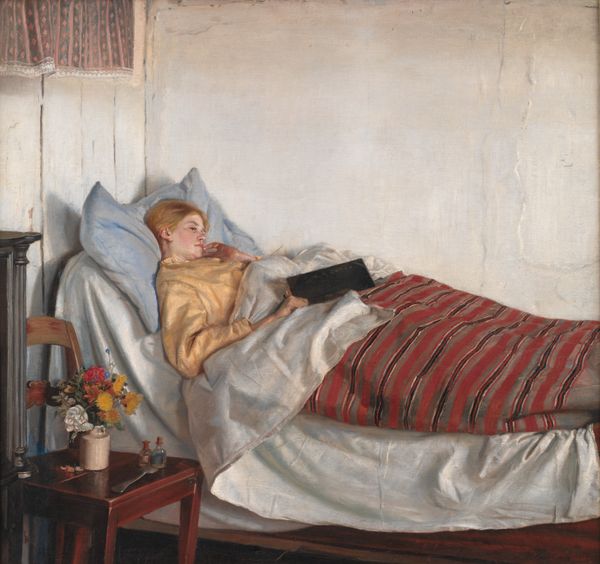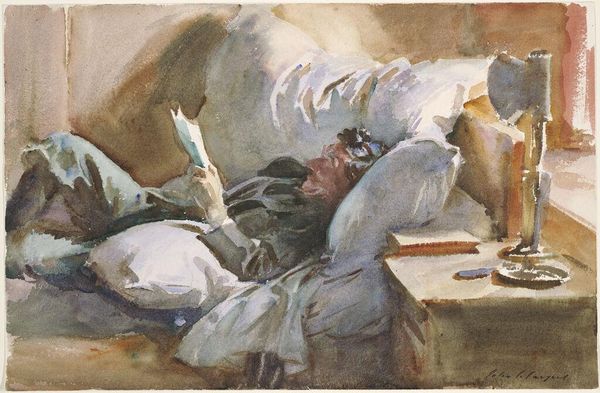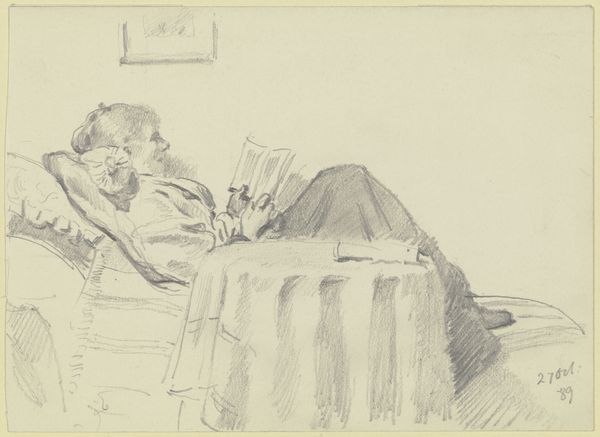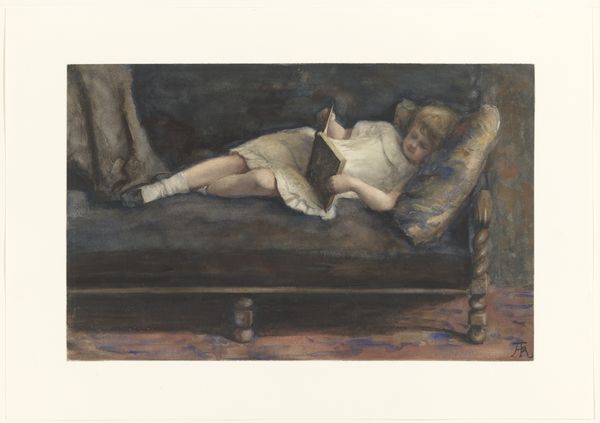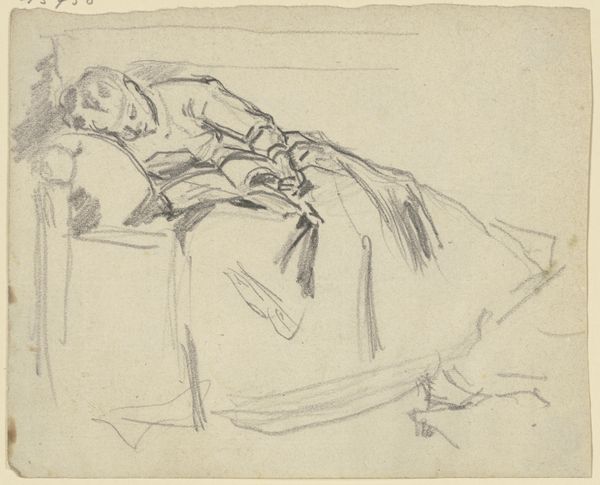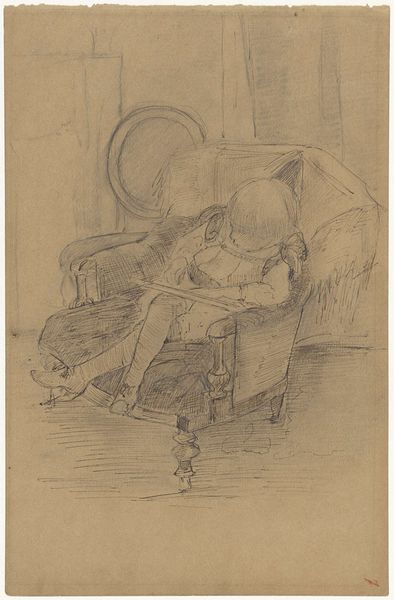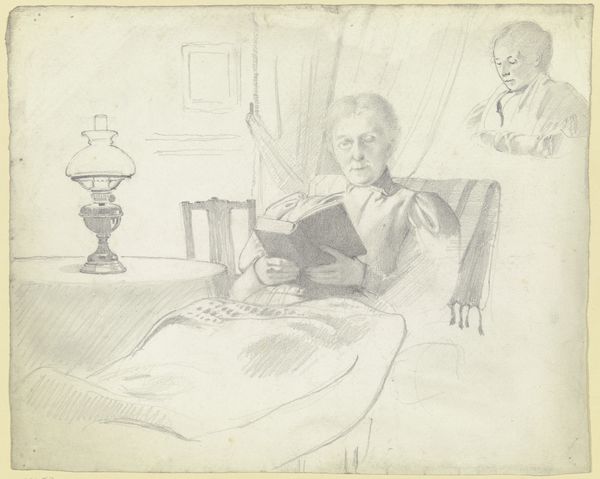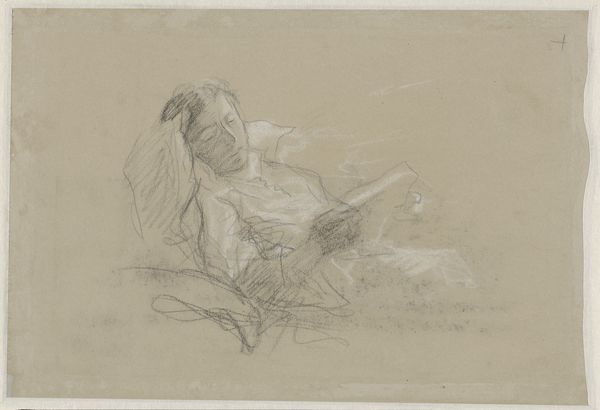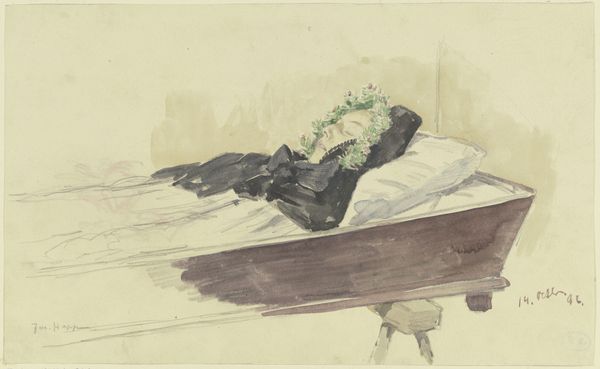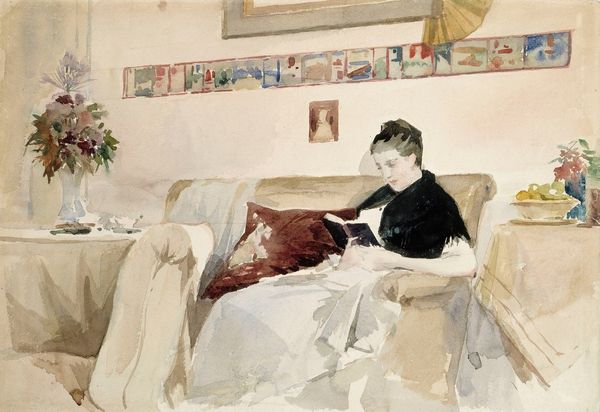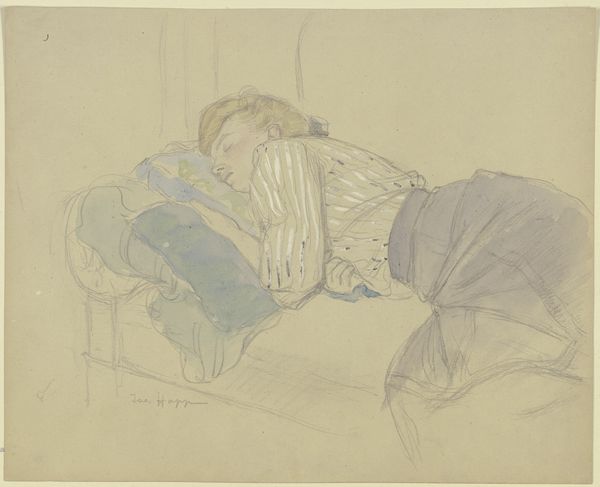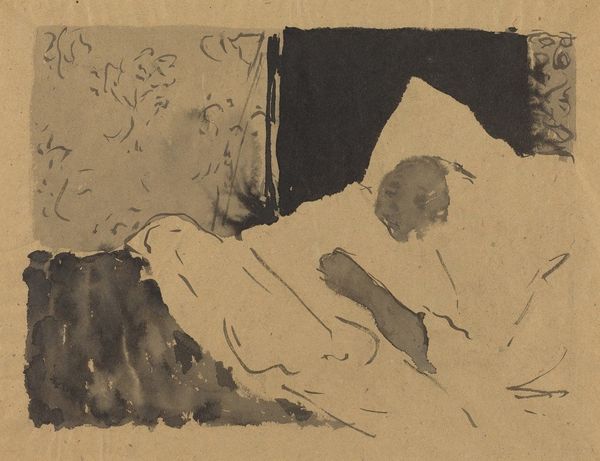
drawing, painting, watercolor
#
portrait
#
drawing
#
narrative-art
#
painting
#
impressionism
#
figuration
#
watercolor
#
intimism
#
genre-painting
#
watercolor
#
realism
Dimensions: sheet: 22.5 x 30.2 cm (8 7/8 x 11 7/8 in.)
Copyright: National Gallery of Art: CC0 1.0
Curator: Leopold von Kalckreuth's watercolor and graphite piece, likely created between 1885 and 1890, is titled "The Artist's Wife Reading in Bed." There’s an intimacy in its realism. Editor: The muted palette immediately strikes me. It's as though we’re catching a stolen glimpse into a private, restful moment. The composition feels deliberately soft, almost unfinished, like a memory fading at the edges. Curator: It is intimate. These depictions of domesticity, seemingly mundane, were increasingly explored by artists at this time. It presents a turn away from the grand narratives of academic painting and toward personal experiences. There is the turn toward intimate and the every day. Editor: I'm curious about the societal context for Kalckreuth’s wife. What access did she have to education, to literature? Her act of reading becomes radical if situated against limited access to information and self-expression for women during this time. How actively did she choose this quietude, and how was it chosen for her? Curator: That is exactly the intersection to interrogate. The choice to portray his wife reading positions her not only as the subject of a painting but also as someone engaged in intellectual activity. It can be read as an acknowledgement— perhaps even an endorsement—of her inner life. The rise of the educated middle class enabled leisure, affording Kalckreuth's wife time to read in bed and also legitimating those everyday experiences as subjects for art. Editor: Yet, even with those advancements, was her intellectual life given the same weight as her husband’s, especially as an artist? Was this image made for her? Or to demonstrate a certain kind of modern sensibility to his potential patrons? Curator: It is worth noting that Kalckreuth himself came from a noble family, so the image plays into these themes of a move toward more ordinary moments even within aristocratic circles. What could feel like the quiet study of an everyday scene, as we’ve explored, contains the ripples of deeper cultural shifts. Editor: These works challenge our preconceived notions about gender roles of the late 19th century, I see value in that provocation. I think there is no singular answer to that interrogation but value that space of continued questions.
Comments
No comments
Be the first to comment and join the conversation on the ultimate creative platform.

